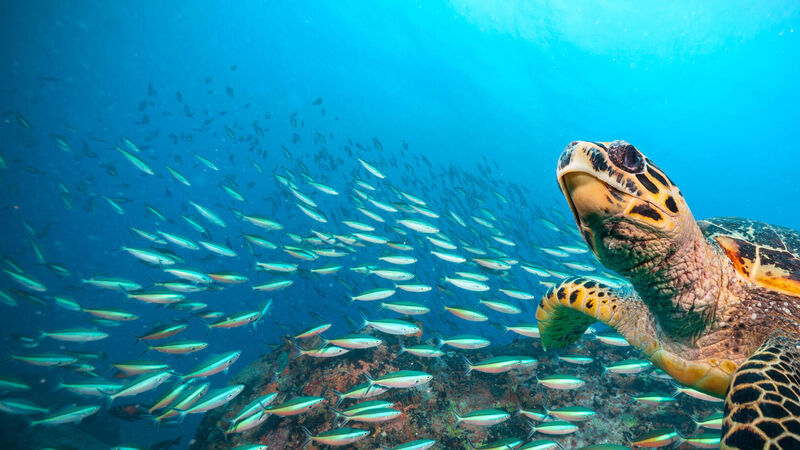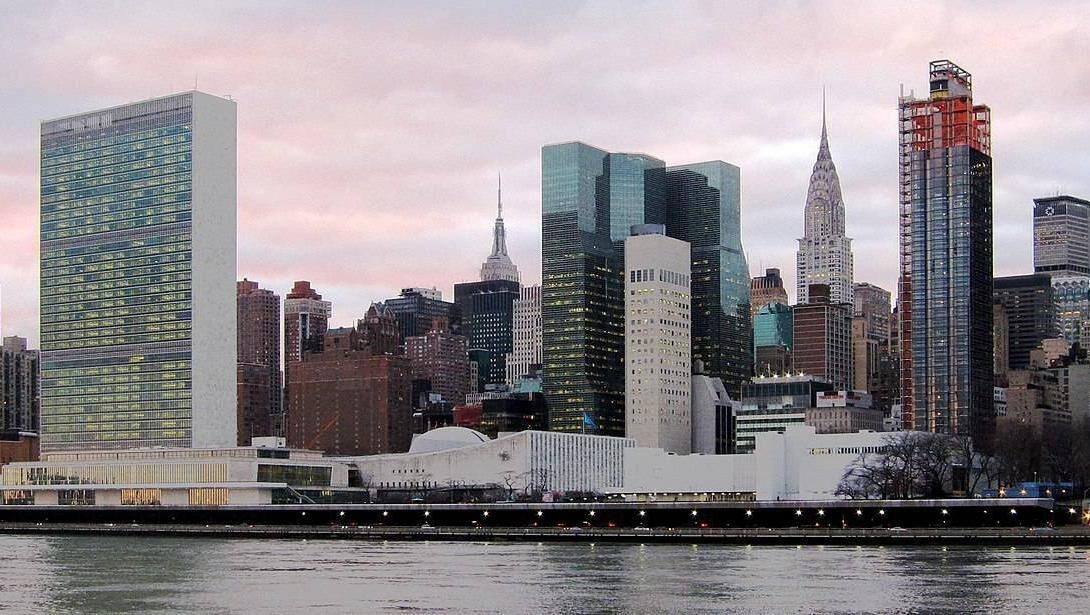United Nations reach landmark accord to protect marine life on the high seas

A historic agreement to protect the world’s oceans has been reached following years of negotiations.
For the first time, United Nations members have agreed on a unified treaty to protect biodiversity in the high seas – nearly half the planet’s surface.
The UN Convention on the Law of the Sea came into force in 1994, before marine biodiversity was a well-established concept.
An updated framework to protect marine life in the regions outside national boundary waters, known as the high seas, had been discussed for more than 20 years, but previous efforts to reach an agreement had repeatedly stalled.
The unified agreement treaty was reached late Saturday after two weeks of talks in New York.
Speaking this morning, President Michael D Higgins said the agreement was "a gain for the future of humanity."
Agreement on a Treaty to protect our oceans, and the vital life both within and which depends on them, is long overdue with only 1.2% of the high seas currently protected," he said.

"All those interested in the future of the planet will be grateful for those who have worked over many years to bring us to this point, the first international agreement on ocean protection since the UN Convention on the Law of the Sea was signed in 1982."
President Higgins noted that the UN Sustainable Development Goal 14 commits to conserving and sustainably using the oceans, seas and marine resources for sustainable development. He said the UN agreement would make "a significant contribution to that goal."
"It is essential that attention now swiftly moves to formal adoption of the text, to ratification and to implementation," he added.
Welcoming the conclusion of the agreement, Tánaiste Micheál Martin said it represented “a major step forward for ocean conservation."
"Currently only 1% of the High Seas are protected, which is far short of the globally agreed target of 30%," he said.
"The agreement provides mechanisms to significantly improve the protection of the marine environment, and Ireland is committed to working with the international community to realise its full potential.”

“We only really have two major global commons – the atmosphere and the oceans,” said Georgetown marine biologist Rebecca Helm.
While the oceans may draw less attention, “protecting this half of the Earth’s surface is absolutely critical to the health of our planet”, she added.
Now that long-awaited treaty text has been finalised, Nichola Clark, an oceans expert at the Pew Charitable Trusts who observed the talks in New York, said: “This is a once in a generation opportunity to protect the oceans – a major win for biodiversity.”
The treaty will create a new body to manage conservation of ocean life and establish marine protected areas in the high seas.
And Ms Clark said that is critical to achieve the UN Biodiversity Conference’s recent pledge to protect 30% of the planet’s waters, as well as its land, for conservation.
The treaty also establishes ground rules for conducting environmental impact assessments for commercial activities in the oceans.
I'm extremely encouraged that countries have agreed on the UN legally binding instrument to ensure the conservation and sustainable use of marine biological diversity of areas beyond national jurisdiction.
— António Guterres (@antonioguterres) March 5, 2023
This is an important step to protect our oceans.
“It means all activities planned for the high seas need to be looked at, though not all will go through a full assessment,” said Jessica Battle, an oceans governance expert at the Worldwide Fund for Nature.
Many marine species – including dolphins, whales, sea turtles and many fish – make long annual migrations, crossing national borders and the high seas.
Efforts to protect them – and human communities that rely on fishing or tourism related to marine life – have previously been hampered by a confusing patchwork of laws.
“This treaty will help to knit together the different regional treaties to be able to address threats and concerns across species’ ranges,” said Ms Battle.
That protection also helps coastal biodiversity and economies, said Gladys Martinez de Lemos, executive director of the non-profit Interamerican Association for Environmental Defence, which focuses on environmental issues across Latin America.
“Governments have taken an important step that strengthens the legal protection of two thirds of the ocean and with it marine biodiversity and the livelihoods of coastal communities,” she said.
The question now is how well the ambitious treaty will be implemented.
The high seas have long suffered exploitation due to commercial fishing and mining, as well as pollution from chemicals and plastics.
The new agreement is about “acknowledging that the ocean is not a limitless resource, and it requires global co-operation to use the ocean sustainably,” said Malin Pinsky, a biologist at Rutgers University in the US.
CLIMATE & SUSTAINABILITY HUB














